


xxxxxThe
English archaeologist Sir Flinders Petrie spent most of his life in
the Middle East. Starting in 1880, he studied the pyramids at Giza
and then excavated some thirty sites in Egypt. Among his important
discoveries were the temple at Tanis (1884); the Greek trading posts of Naukratis and Daphnae; the
famous Fayum mummy portraits at Hawara; the beautiful frescoes and
pavements at Amarna; and the Merneptah Stele,
a granite tablet which contained the earliest-known Egyptian
reference to the land of Israel. He carried out extensive
excavations in Palestine from 1927 to 1938 at sites such as
Tell el-Jemmeh and Tel el-Farah. He was knighted in
1823 for his services to archaeology, not only for his important
findings, but also for his contribution to methodology. His
painstaking recording and his method of establishing the history of
a site by the examination of pottery fragments, set new standards in
archaeology. He wrote nearly one hundred books, including The
Method and Aims of Archaeology
and Seventy Years in Archaeology.
SIR FLINDERS PETRIE 1853 -
1942 (Va, Vb,
Vc, E7, G5, G6)
Acknowledgements
Petrie: 1903,
photographer unknown – The Petrie Museum of Egyptian Archaeology,
London. Findings: The Petrie Museum of
Egyptian Archaeology, London, contains over 80,000 objects. Pitt
Rivers: 1860-1869, artist unknown – Pitt
Rivers Museum, University of Oxford, England.
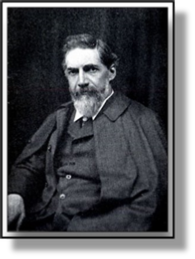 xxxxxThe English archaeologist and Egyptologist Sir
Flinders Petrie spent much of his working life in Egypt and The
Levant. Over a period of forty years, starting in 1880, he studied
the pyramids at Giza and excavated some thirty sites -
including those at Tanis, Naukratis, Amarna and Abydos. During
this time he made a valuable contribution to the methodology of
field excavation, and pioneered a valuable dating system based on
the identification of the pottery associated with various ancient
cultures. From 1927 to 1938 he worked in Palestine, notably at the
ancient city of Lachish. He was professor of Egyptology at the
University of London from 1892 to 1933 - the first chair in
this subject - and in 1894 he founded The Egyptian Research
Account, an institution which became the British School of
Archaeology in Egypt in 1905 and remained in being until 1954.
Among his books - nearly one hundred in number - are The Method and Aims of Archaeology
of 1904, and Seventy Years in Archaeology,
published in 1931.
xxxxxThe English archaeologist and Egyptologist Sir
Flinders Petrie spent much of his working life in Egypt and The
Levant. Over a period of forty years, starting in 1880, he studied
the pyramids at Giza and excavated some thirty sites -
including those at Tanis, Naukratis, Amarna and Abydos. During
this time he made a valuable contribution to the methodology of
field excavation, and pioneered a valuable dating system based on
the identification of the pottery associated with various ancient
cultures. From 1927 to 1938 he worked in Palestine, notably at the
ancient city of Lachish. He was professor of Egyptology at the
University of London from 1892 to 1933 - the first chair in
this subject - and in 1894 he founded The Egyptian Research
Account, an institution which became the British School of
Archaeology in Egypt in 1905 and remained in being until 1954.
Among his books - nearly one hundred in number - are The Method and Aims of Archaeology
of 1904, and Seventy Years in Archaeology,
published in 1931.
xxxxxPetrie was
born in Charlton, near Greenwich, now part of South-East
London. His father was a civil engineer and surveyor, and his
mother had a knowledge of fossils and natural minerals. Both
encouraged their son to take an interest in archaeology and all
things ancient. He was largely self-taught, but his father
gave him a good grounding in surveying, and as a young man he
travelled across the country visiting ancient sites. He became
particularly interested in Stonehenge, and after a close study of
this prehistoric monument, he set out his findings in a work
entitled Stonehenge: Plans, Description and
Theories, published in 1880. This proved highly valuable
as a basis for further research. And it was in that same year that
he made his first visit to Egypt and, living in a cave at Giza,
began a systematic survey of the Great Pyramid and the two smaller
pyramids nearby. For some two years, working slowly and
meticulously, he sought to understand their geometry and the
method by which they were built. Much of his data, particularly
regarding the pyramid plateaux, remain valid to this day.
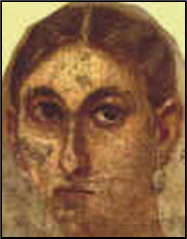
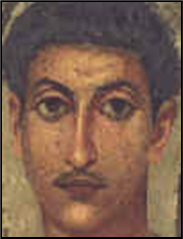 xxxxxHis work at Giza marked the beginning of forty years
of dedicated work which took him all over Egypt and much of
Palestine. During this long period of painstaking research he made
a number of outstanding discoveries. In the Nile Delta, for
example, he carried out diggings at the great temple in Tanis in 1884, and it was there that he discovered
pieces of a colossal statue of Ramses II, king of Egypt from 1303
to 1213 BC. Then over the next two years he unearthed the ancient
fortress towns of Naukratis and Daphnae. It was during these
excavations that, having uncovered fragments of painted pottery,
he recognised the civilization to which they belonged, and was
able to prove that both these settlements were ancient Greek
trading posts. This idea of studying and comparing pieces of
pottery at various levels of an excavation, pioneered by Petrie,
became a valuable means of reconstructing the history of an area.
Pottery discovered at Naukratis assisted in tracing the early
development of the Greek alphabet, and threw light on the trading
carried out by a number of Greek states around the 6th century BC.
At Daphnae he uncovered a massive fortress built by Pharaoh
Psamtik I a century earlier.
xxxxxHis work at Giza marked the beginning of forty years
of dedicated work which took him all over Egypt and much of
Palestine. During this long period of painstaking research he made
a number of outstanding discoveries. In the Nile Delta, for
example, he carried out diggings at the great temple in Tanis in 1884, and it was there that he discovered
pieces of a colossal statue of Ramses II, king of Egypt from 1303
to 1213 BC. Then over the next two years he unearthed the ancient
fortress towns of Naukratis and Daphnae. It was during these
excavations that, having uncovered fragments of painted pottery,
he recognised the civilization to which they belonged, and was
able to prove that both these settlements were ancient Greek
trading posts. This idea of studying and comparing pieces of
pottery at various levels of an excavation, pioneered by Petrie,
became a valuable means of reconstructing the history of an area.
Pottery discovered at Naukratis assisted in tracing the early
development of the Greek alphabet, and threw light on the trading
carried out by a number of Greek states around the 6th century BC.
At Daphnae he uncovered a massive fortress built by Pharaoh
Psamtik I a century earlier.
xxxxxLater,
while working in the Al-Fayum region in the late 1880s, he
found jewellery belonging to a princess of the 12th dynasty
(around 1880 BC) at Illahun, and at Gurob he unearthed a large
number of papyri and Aegean pottery that confirmed dates relating
to the Mycenaean and other ancient Greek civilizations. But his
greatest find in this area (at Hawara), was the discovery of the
famous Fayum mummy portraits, some eighty in number. Painted on
wooden boards and depicting the face of a single person (sometimes
the head and shoulders) they were placed over the faces of the
bodies mummified for burial. Dating from the Roman occupation of
Egypt - approximately the first three centuries AD -
they had become detached from their mummies and were in a
remarkably good state of preservation (two
Illustrated above).
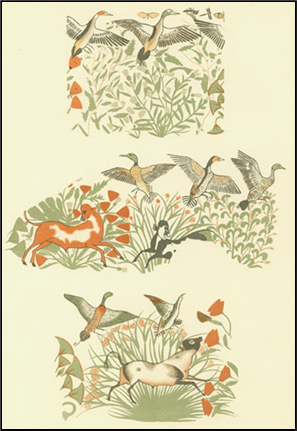
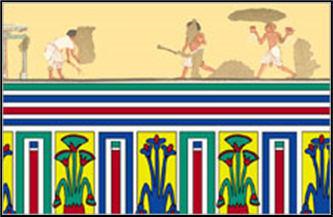 xxxxxIt was while working at Tell el-Amarna in 1891,
excavating the city of Akhenaton (the ruler of Egypt from 1353 to
1336 BC) that he found several beautiful frescoes and three
painted pavements in the King’s House and the Harem Quarter of the
Great Palace. The pavement scenes, one of which was 300ft square,
were painted on gypsum plaster and depicted plants, animals and
hunting scenes. These were so “astonishingly fresh and clear”, as
he recorded at the time, that he built a structure over the top of
them to preserve them for posterity. Sadly, the tourists these
treasures attracted trampled down nearby crops and the local
peasant farmers smashed up the pavements to put end to their
unwelcome visitors! It is only through Petrie’s documentation of
these frescoes and pavements, recoded in black and white and
colour drawings, that provides an idea of their original state. On
the left are the designs on the painted gypsum pavements, and on
the right is a wall painting, placed above a reconstruction of the
painted
xxxxxIt was while working at Tell el-Amarna in 1891,
excavating the city of Akhenaton (the ruler of Egypt from 1353 to
1336 BC) that he found several beautiful frescoes and three
painted pavements in the King’s House and the Harem Quarter of the
Great Palace. The pavement scenes, one of which was 300ft square,
were painted on gypsum plaster and depicted plants, animals and
hunting scenes. These were so “astonishingly fresh and clear”, as
he recorded at the time, that he built a structure over the top of
them to preserve them for posterity. Sadly, the tourists these
treasures attracted trampled down nearby crops and the local
peasant farmers smashed up the pavements to put end to their
unwelcome visitors! It is only through Petrie’s documentation of
these frescoes and pavements, recoded in black and white and
colour drawings, that provides an idea of their original state. On
the left are the designs on the painted gypsum pavements, and on
the right is a wall painting, placed above a reconstruction of the
painted dado.
dado.
xxxxxBut
Petrie’s richest find historically was his discovery of the Merneptah Stele. Found at the ancient city
of Thebes (near today’s Luxor) in 1896, this upright stone tablet,
made in black granite and over ten feet in height, contained an
inscription on its reverse side by the Ancient Egyptian King
Merneptah, who reigned from 1213 to 1204 BC. For the most part it
recorded his successful defence of Egypt against a powerful
invasion by the Libyans, but it also contained what is thought to
be the earliest-known Egyptian reference to the land of
Israel (I.si.ri,ar ). For that reason
the tablet is often referred to as the Israel
Stele. The discovery made newspaper headlines across the
world. And while working at Luxor he found a statue of Merneptah
himself (the son and successor of Ramses II) and another,
beautifully sculptured stele depicting a battle between Amenhotep
III and the Nubians and Syrians.
xxxxxPetrie
carried out extensive excavations in Palestine from 1927 to 1938,
particularly at the ancient city of Lachish (now Tell ed Duweir in
Israel) and at the sites of Tell el-Jemmeh, Tell el-Farah
and Tell el-Ajjul, but his first visit to Palestine was in
1890. It was then, during a six-week stay at Tell el-Hesi,
that, applying his principle of sequence dating (also known as
“seriation”), he made his first stratigraphic study - an
examination of successive levels - and produced a chronology
of this ancient hill site. He then went on to survey a number of
tombs in the valley of Wadi al-Rababah south of Jerusalem
which dated from the Iron Age and the Roman period. His work at
Tell el-Hesi was continued from 1894 to 1897 by one of
Petrie’s students, the American archaeologist Frederick
J. Bliss (1857-1939). Illustrated
here are some of Petrie’s findings:
Vc-1881-1901-Vc-1881-1901-Vc-1881-1901-Vc-1881-1901-Vc-1881-1901-Vc-1881-1901-Vc
xxxxxPetrie was
knighted in 1923 in recognition of his life-time work in the
service of archaeology, not only for the many important
discoveries he made in the Middle East, but also because of his
contribution to methodology. His painstaking recording of all the
results of his extensive surveying and excavation; the new and
enduring method he introduced to establish the chronology of a
site, based on the examination of pottery fragments; and the
meticulous care he took when carrying out the inspection of a
site, set new standards in archaeology. It was this highly
professional approach, together with his innovations, that earned
him the title Father of Modern Archaeology. Together with Lady
Petrie he spent the last years of his life in Jerusalem at the
American School of Oriental Research. He died of a stroke in July
1942 and was buried in the Protestant cemetery on Mount Zion.
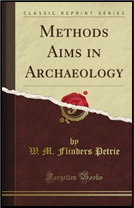 xxxxxHe wrote 97 books and over 850 articles on his
research and discoveries. His Methods and Aims
in Archaeology, published in 1904, was a particularly
valuable work in which he emphasised the importance of a
systematic approach to excavation, including the value of
photography in the accurate recording of data.
xxxxxHe wrote 97 books and over 850 articles on his
research and discoveries. His Methods and Aims
in Archaeology, published in 1904, was a particularly
valuable work in which he emphasised the importance of a
systematic approach to excavation, including the value of
photography in the accurate recording of data.
xxxxxIncidentally, Petrie returned to the Al-Fayum region in 1910
and added to his store of panel portraits. Today some 900 of these
panel paintings are in existence, the majority from the Fayum
region, and among those museums with a number on show are the
British Museum, The Louvre in Paris, and the Metropolitan Museum
of Art in New York. ……
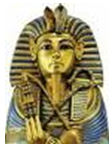
xxxxx…… In the 1890s Petrie trained a young archaeologist
named Howard Carter, the man who in November 1922 discovered the
tomb of the young king Tutankhamun in the Valley of the Kings at
Thebes. In 1913 Petrie sold his large collection of Egyptian
antiquities to University College London, where it is now housed
in the Petrie Museum of Egyptian Archaeology. ……
xxxxx…… ThexEnglish archaeologist Percy Gardner (1846-1937)
served as field assistant to Petrie while he was working in Egypt,
and his brother Ernest Gardner (1862-1939), also an archaeologist, continued
Petrie’s research at Naukratis in 1885, and was Director of the
British School of Archaeology at Athens from 1887 to 1895. ……
xxxxx…… On his death in 1942 Petrie donated his brain to the
Royal College of Surgeons in London to
assist in research, but it was during the Second World War and the
German advance towards Egypt delayed its despatch. At one time it
was thought to have been lost in transit, but it eventually
reached its destination and is now preserved in a large glass jar.
……
xxxxx…… Petrie - full name Matthew Flinders Petrie -
was named after his maternal grandfather, Matthew Flinders, the
English navigator who circumnavigated Australia in 1801. ……
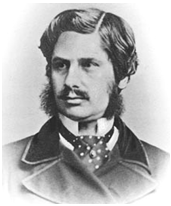 xxxxx…… Itxwas
around this time that the amateur archaeologist Augustus
Pitt Rivers (1827-1900), a former
general in the British army, began investigating ancient sites in
his large estate in Cranbourne Chase, Dorset, England. Like
Petrie, he carefully measured every finding and kept meticulous
records to show where each was found. The excavated material was
sent to Salisbury Museum, and his ethnological collection, some
20,000 items, made up the basis of the Pitt-Rivers Museum in
Oxford. In 1883 he was appointed the country’s first inspector of
ancient monuments.
xxxxx…… Itxwas
around this time that the amateur archaeologist Augustus
Pitt Rivers (1827-1900), a former
general in the British army, began investigating ancient sites in
his large estate in Cranbourne Chase, Dorset, England. Like
Petrie, he carefully measured every finding and kept meticulous
records to show where each was found. The excavated material was
sent to Salisbury Museum, and his ethnological collection, some
20,000 items, made up the basis of the Pitt-Rivers Museum in
Oxford. In 1883 he was appointed the country’s first inspector of
ancient monuments.







 xxxxxThe English archaeologist and Egyptologist Sir
Flinders Petrie spent much of his working life in Egypt and The
Levant. Over a period of forty years, starting in 1880, he studied
the pyramids at Giza and excavated some thirty sites -
xxxxxThe English archaeologist and Egyptologist Sir
Flinders Petrie spent much of his working life in Egypt and The
Levant. Over a period of forty years, starting in 1880, he studied
the pyramids at Giza and excavated some thirty sites -
 xxxxxHis work at Giza marked the beginning of forty years
of dedicated work which took him all over Egypt and much of
Palestine. During this long period of painstaking research he made
a number of outstanding discoveries. In the Nile Delta, for
example, he carried out diggings at the great temple in Tanis in 1884, and it was there that he discovered
pieces of a colossal statue of Ramses II, king of Egypt from 1303
to 1213 BC. Then over the next two years he unearthed the ancient
fortress towns of Naukratis and Daphnae. It was during these
excavations that, having uncovered fragments of painted pottery,
he recognised the civilization to which they belonged, and was
able to prove that both these settlements were ancient Greek
trading posts. This idea of studying and comparing pieces of
pottery at various levels of an excavation, pioneered by Petrie,
became a valuable means of reconstructing the history of an area.
Pottery discovered at Naukratis assisted in tracing the early
development of the Greek alphabet, and threw light on the trading
carried out by a number of Greek states around the 6th century BC.
At Daphnae he uncovered a massive fortress built by Pharaoh
Psamtik I a century earlier.
xxxxxHis work at Giza marked the beginning of forty years
of dedicated work which took him all over Egypt and much of
Palestine. During this long period of painstaking research he made
a number of outstanding discoveries. In the Nile Delta, for
example, he carried out diggings at the great temple in Tanis in 1884, and it was there that he discovered
pieces of a colossal statue of Ramses II, king of Egypt from 1303
to 1213 BC. Then over the next two years he unearthed the ancient
fortress towns of Naukratis and Daphnae. It was during these
excavations that, having uncovered fragments of painted pottery,
he recognised the civilization to which they belonged, and was
able to prove that both these settlements were ancient Greek
trading posts. This idea of studying and comparing pieces of
pottery at various levels of an excavation, pioneered by Petrie,
became a valuable means of reconstructing the history of an area.
Pottery discovered at Naukratis assisted in tracing the early
development of the Greek alphabet, and threw light on the trading
carried out by a number of Greek states around the 6th century BC.
At Daphnae he uncovered a massive fortress built by Pharaoh
Psamtik I a century earlier. 
 xxxxxIt was while working at Tell el-
xxxxxIt was while working at Tell el- dado.
dado.  xxxxxHe wrote 97 books and over 850 articles on his
research and discoveries. His Methods and Aims
in Archaeology, published in 1904, was a particularly
valuable work in which he emphasised the importance of a
systematic approach to excavation, including the value of
photography in the accurate recording of data.
xxxxxHe wrote 97 books and over 850 articles on his
research and discoveries. His Methods and Aims
in Archaeology, published in 1904, was a particularly
valuable work in which he emphasised the importance of a
systematic approach to excavation, including the value of
photography in the accurate recording of data.
 xxxxx…… Itxwas
around this time that the amateur archaeologist Augustus
Pitt Rivers (1827-
xxxxx…… Itxwas
around this time that the amateur archaeologist Augustus
Pitt Rivers (1827-


